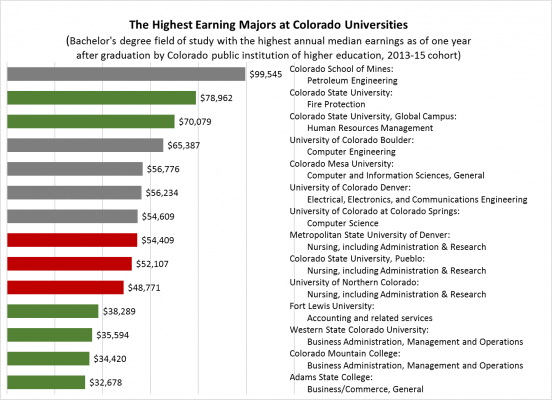In his July 2018 Executive Order, President Trump called for the Federal government to develop a national workforce strategy through the new National Council for the American Worker. A key element of the strategy is making the labor market more transparent—especially concerning education and job-training programs that are designed to help prepare American workers for success. Currently, too little is known about the link between higher education and workers’ subsequent employment and earnings.
In the same Executive Order, President Trump asked the National Council to determine “a specific course of action for increasing transparency related to education and job-training program options, including those offered at 4-year institutions and community colleges.” With its pilot Post-Secondary Employment Outcomes project, the Census Bureau is building data sets and a roadmap to help fill in the data gap, recently releasing its second data set and tools. The Census Bureau will also be conducting a webinar later today to further explore and explain the data and methodology.
Through this project, the Census Bureau merges administrative educational data from partner colleges and universities with national job statistics from the Longitudinal Employer-Household Dynamics (LEHD) program in the bureau’s Center for Economic Studies in order to examine the labor market outcomes of college graduates. The results spotlight national employment and annual median earnings of recent graduates of partner colleges and universities by institution, degree level, degree field, and graduation cohort. More specifically, the new data release pairs LEHD data with data from the Colorado Department of Higher Education. Moreover, it also builds on last April’s release of data covering graduates of the University of Texas System.
The Census Bureau created a data visualization tool that allows the public to explore the graduates’ earnings through simple bar charts and download the underlying data, tracking earnings over time, by institution, and by field of study, while ensuring individual data remain confidential and secure. Students, parents, employers, and others can use the tool to answer questions like:
- Which fields of undergraduate study lead to jobs that tend to have strong earnings growth?
- How much may first-year earnings vary for nursing graduates versus engineering graduates? (In other words, what is the interquartile range for earnings?)
- How much does pay vary for the same major across different Colorado universities?
The chart shown in this blog answers a different question: What are the top first-year (median) earning fields of study at each Colorado university?
Petroleum engineering tops the rankings for the Colorado School of Mines and for all Colorado public institutions of higher education. (In Texas, petroleum engineers also topped the rankings at the University of Texas at Austin.)
The chart also shows that the highest earners tended to choose one of three areas of study: engineering (grey bars), business or management (green bars), or nursing (red bars). The top-paying majors varied considerably across the fourteen public universities, from $32,678 for general business/commerce majors at Adams State College to $99,545 for petroleum engineers at the Colorado School of Mines.
Better data like these are an essential tool to solving our nation’s skills crisis. With projects like the Post-Secondary Employment Outcomes, the Census Bureau already has created must-have data and tools for students considering their options at Texas and Colorado universities. In addition, the pilot project is paving the way for more states and university systems to take part. As more post-secondary institutions establish agreements with the Census Bureau, more American students, parents, and workers will have authoritative data with which to weigh the payoff of their higher education investments.


